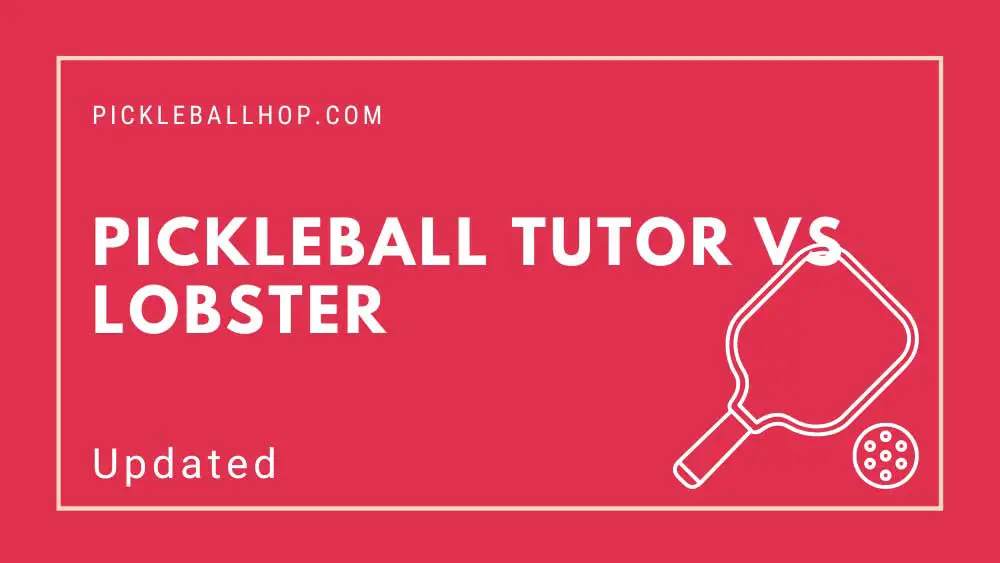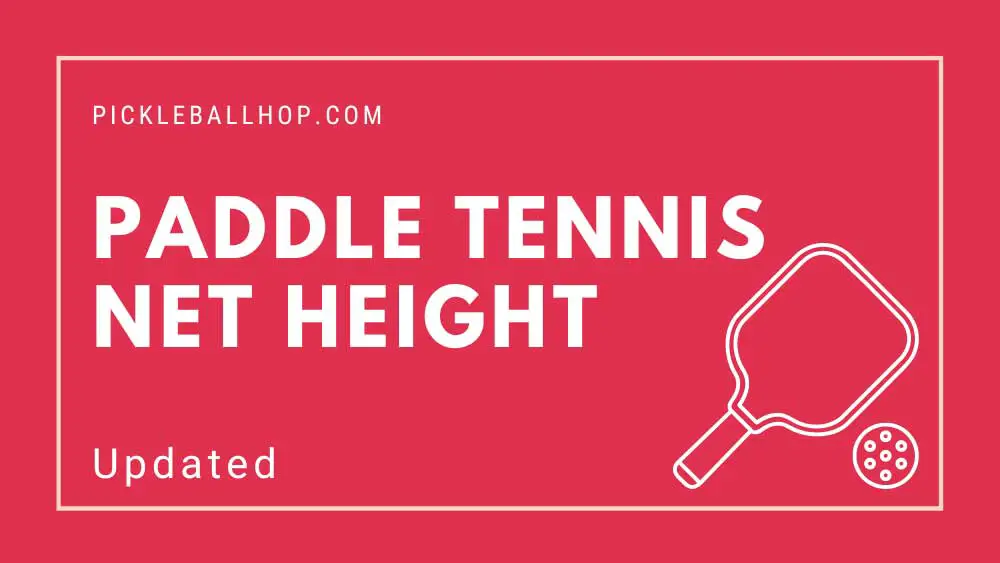If you take the appropriate precautions, can you play tennis with tennis elbow? Or do you have to put your racquet away for a while?
Is it safe to start playing again after taking a break from the court or course for a few weeks as you heal (your injury, for example)?
Tennis Podcast: Playing Or Not Playing

You can still play and recover even if your injury is not severe, AND you do the right things to treat it while you rest – IF you take the right steps to treat it at the right time.
You may enjoy reading Best Pickleball Paddles For Tennis Elbow
In order to understand this vexing injury, I’ve broken it down into five categories:
5 Key Guidelines If You Want To Continue Playing:
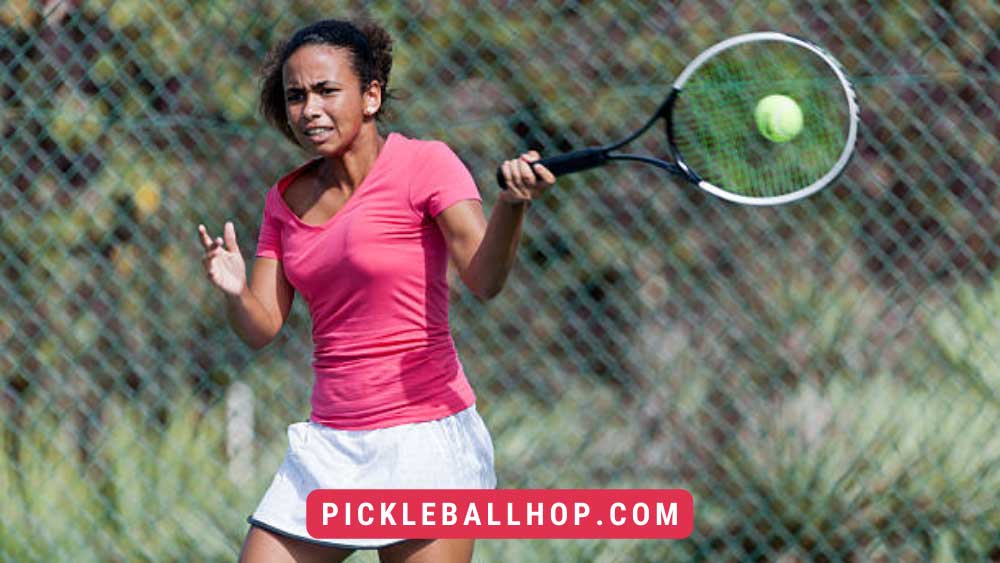
It is a given that you should rest and stop if you have an injury!?
In many cases, doctors will tell you that you need to rest your injury “for it to heal” which leaves you believing that the decision has already been made for you…
As soon as this happens, the question becomes, “How long should I rest before I can start to move? ”
Often, this is due to a misperception about the injury itself – it isn’t guaranteed!
The article discusses why “absolute rest” may not be the best solution for Tennis Elbow sufferers.
Despite months of complete rest, a tendon (or ligament) may not heal when it’s completely restrained from all activity.
In general, it’s best to reduce the amount of time you spend doing the activity that caused your injury.
The good news is, it isn’t always necessary, even if it is the smartest thing to do!
Tennis elbow and Golfer’s elbow injuries may be recoverable with time (and in some cases, they may even be moderate).
As for severity, clearly, we need to draw a line somewhere, which brings us to our first guideline.
You may enjoy reading Is Pickleball Easier than Tennis?
1. If you have a severe injury, don’t play tennis
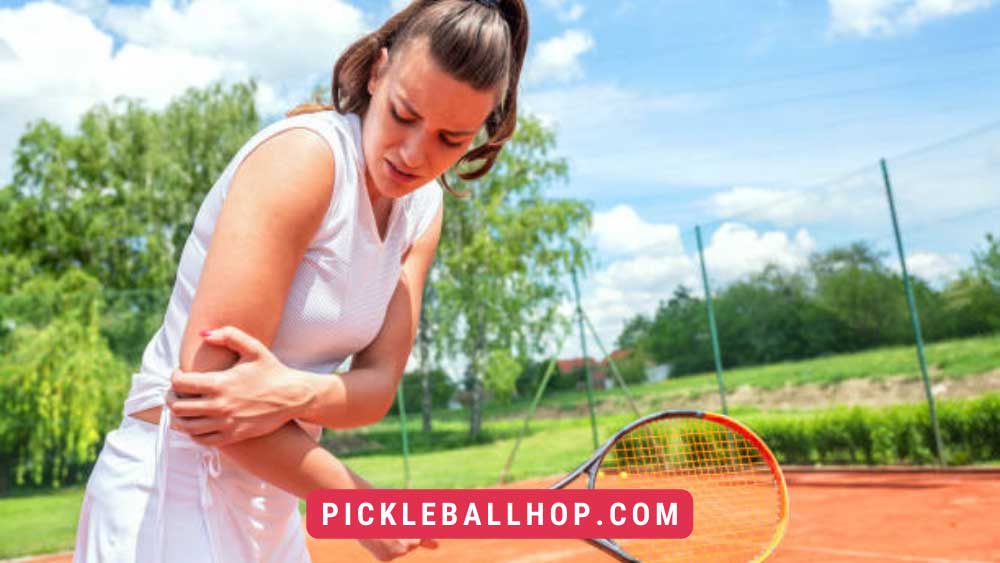
The severity of your injury should be your first consideration.
You may need to take time off if your injury is more severe (or your injury is extremely painful at the moment).
This is obviously a deal breaker if you are certain you have a bad injury (MRI, Diagnostic Ultrasound Scan / Sonogram) such as a significant tendon tear (not as common as you might think), or severe to moderate Tendinosis (degeneration = more common) but you are unable to prove it.
If you don’t have a good scan to determine how severe your injury is in actuality, you may have difficulty determining how bad it is, since symptoms do not always correlate with the severity of the injury.
A minor injury can hurt like hell whereas a severe one might seem mild at first glance; punishments don’t always fit crimes!
The only thing you can rely on is symptoms – so pay attention not just to how painful it is, but how strong it feels, too.
In the same manner, if it hurts when you walk, drive, or do simple, light tasks around the office or home, playing tennis will probably aggravate it further, and you might have to wait for it to “calm down” before playing again.
If you get injured on the court, you’re not going to just pop a few painkillers or anti-inflammatories and get back on the court, are you?! )?
The healing process may take months for a severe injury, but if it’s just a flare-up of a milder injury, it may take just a few days.
You may enjoy reading Pickleball vs Tennis
2. Play or Recover Faster!
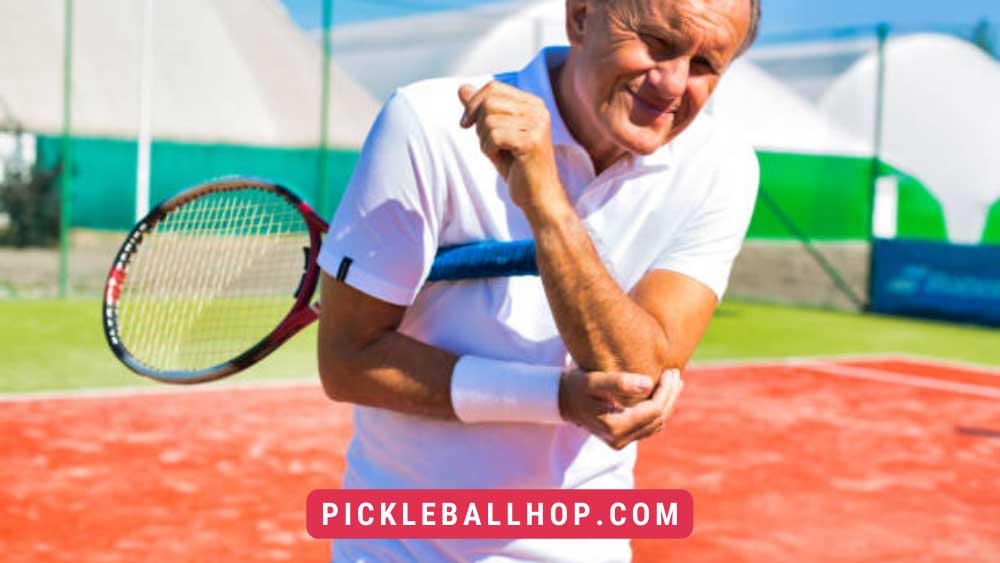
Invariably, I receive the question “Do I need to stop playing?” when treating a tennis player or golfer at my office… With a rather impolite answer of my own, I answer their question…
What is your highest priority?
A. Making the fastest recovery possible – Despite the lowest chances of re-injury?
OR
B. What if you continue to play despite your Tennis Elbow’s slow recovery?
Play or recover faster / Eat cake or keep playing?
You can’t have it all, right? Let’s be honest, golfers and tennis players! I know who you are.
It is important to know your priorities, choose one, and live by them.
Taking a break will likely result in the player recovering faster AND having fewer chances of furthering their injury… (but will they have more fun?)
Nevertheless, I find that how you treat your injury is more important than anything else (more about that when we move on to #4), and that’s what gives you leverage.
It is my belief that the tennis player or golfer who continues to play (in a cautious, moderate manner #4) as well as gets the correct treatment / follows the correct self-care protocol, will be better off.
There is no doubt that this product will outperform (recovery and healing-wise) the tennis or golf player who adheres to conventional medical advice and takes a long break from playing for as long as possible!
You will outperform a tennis player or golfer who follows common wisdom / standard medical treatment and takes a long break from playing (in terms of healing and recovery).
You’re going to be skeptical about this! My patients have generally done this before they saw me, so I can only tell you that’s what they have done.
You may enjoy reading How much does it cost to convert tennis court to pickleball court?
As long as we can get them out of this “Triple Trap” with some major Soft Tissue / Muscle and Tendon Therapy, if progress is made, then recovery will become not only possible but very likely, allowing them to return to playing as fast as possible.
In my opinion, there is a low likelihood that an injured player will be able to recover fully from his or her injury, regardless of whether they are still playing and whether they are following the standard treatment protocol, (especially if they are beyond the early stages of the injury and are in the moderate-to-severe stages).
This is not something I recommend you try.
3. Don’t play if it starts hurting!

When playing, it’s how it feels as you swing that racket or club that matters most and what you want to concentrate most on…
You should not focus on how you feel when doing minor-effort tasks on a daily basis.
There will probably be stiffness in the morning, soreness all day, and pain when you twist or grab something sharp.
This is completely normal, and unless it becomes unbearably intense, and hurts you with every action, you shouldn’t overreact/pay too much attention to it.
It’s important to remember that those symptoms often come and go without being directly related to the progress of your treatment, so you shouldn’t be discouraged by them.
When your Tennis Elbow is 100% healed, your symptoms will be gone, but don’t expect a 1:1 ratio, such as 75% less pain equals 75% healing.
It is not necessarily true that a large flare-up of symptoms indicates a re-injury that was correspondingly significant. It’s possible, but it’s not always the case.
The best time to listen is when you’re all warmed up and everything starts hurting when you’re playing.
If it decreases to a whisper while you play, you can give it the benefit of the doubt – provided you’re just starting to play.
Nevertheless, if the pain continues at that level or worsens, you need to stop.
If you are faced with that situation, make yourself a promise to stop.
At that point, keeping playing is the worst thing you can do.
You may enjoy reading Games Similar To Tennis
4. Change your playing style – play less, etc.
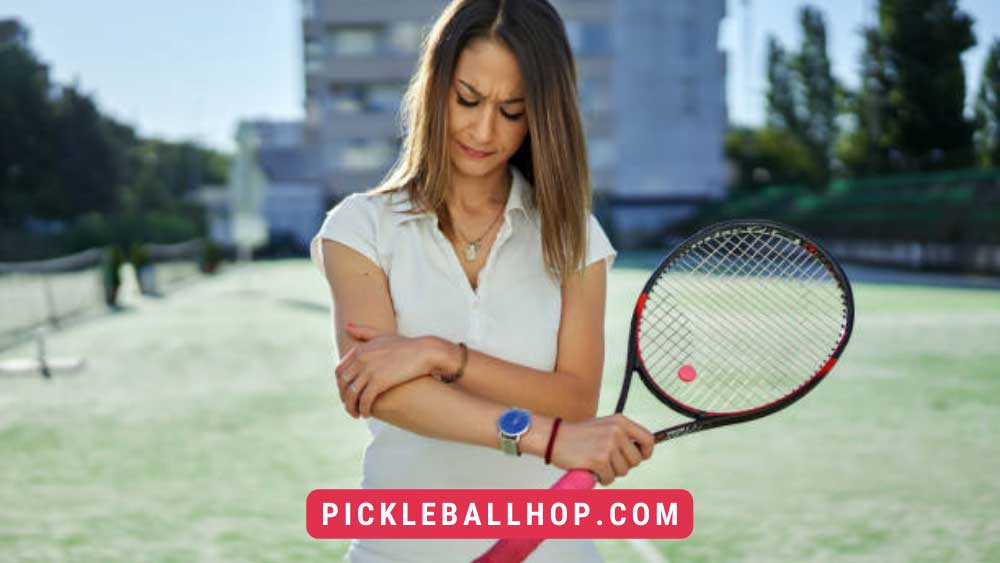
You should modulate during your recovery, no matter what you do. Don’t rush.
Taking a week off is okay if needed, but don’t play too hard, too often, etc.
Don’t forget to think about recovery time!
Several reasons lead me to believe that tennis players and golfers (with mild-to-moderate injuries) would benefit more from modulating their playing than stopping and resting for weeks or months:
The healing of tendons does not always occur while you are resting, hoping, and waiting.
The number of tennis players and golfers who walked into my clinic during the last year and told me they had taken three weeks, six weeks – or even 2-3 months off from playing has been staggering!
This wound cannot be healed by time alone. Managing your activities over time so as not to overstress it over time, is the key to healing it over time.
Morale is another important factor.
As opposed to the scenario I just described, where you wait a certain period of time to get back to playing, only to find that the pain is just as bad as ever…
You can maintain your motivation and morale by celebrating small victories and keeping playing despite some setbacks.
A white T-shirt stained by catsup is not going to fade over time in the same way that perfect, steady progress will.
The most common approach is “two steps forward – one step back! ”
Why not dance the “two-step dance of recovery” on the court instead of on the treadmill?
It always makes me so happy to see my patients playing through their recuperations!
You may enjoy reading How many pickleball courts fit on a tennis court?
It’s important to be disciplined about it.
Playing is easy if you follow these steps:
- Make sure you warm up well first, stretches and self-therapy included.
- Even if it feels fine, play for a shorter period. (Is there a way you know how tomorrow will feel? No? If not, don’t push your luck, right?)
- Don’t play on consecutive days! It may be necessary to take extra time between playing, and redouble your self-care, if your elbow flares up a lot after playing one day.
Be prepared to take more time for recovery and always keep in mind the time you need…
You should also try it out regardless of your symptoms; if your elbow is feeling better after taking a few days off for recovery, but a little cranky, you shouldn’t let that hold you back!
If it hurts too much, you can always stop playing.
It’s now time for the most important rule…
You may enjoy reading Pickleball vs. Paddle Tennis
5. The Rest Of The Time, Treat Your Tennis Elbow Right
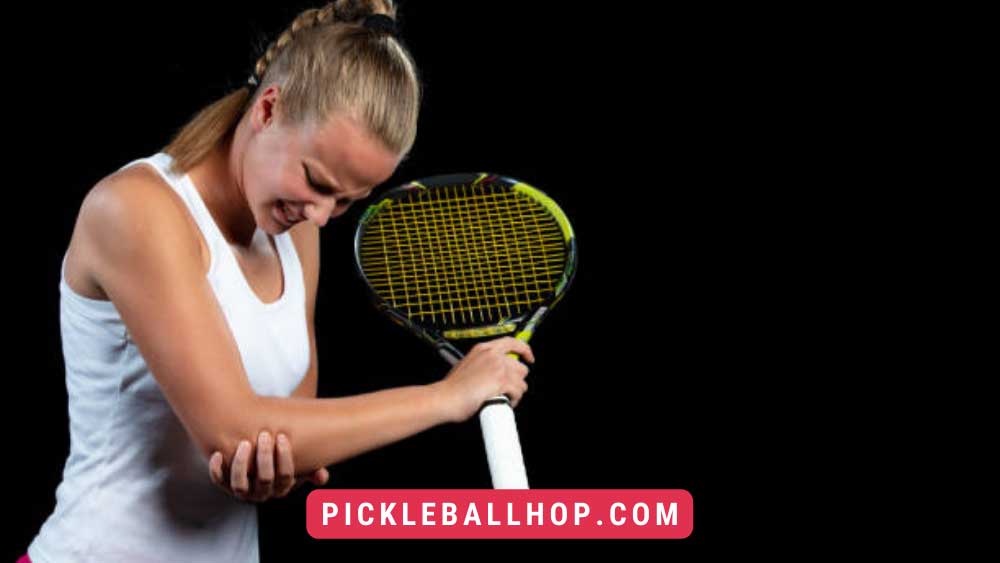
Getting away with more time ON the court/course can depend on how you treat it on the court/course!
Lastly, I will summarize the most important part of this tip as follows:
Mobilization of soft tissues
What are you doing to treat your injury? Have you ever:
- Is it safer to follow conventional wisdom and play it safe?
- How about “hedging your bets? “ By combining the two?
- OR “going all in?”
Playing it safe or hedging your bets off the court or golf course isn’t a good idea if you’re going to continue playing through your injury.
That implies following common sense; for example, icing, taking anti-inflammatory medication, wearing a brace (except when playing), and getting cortisone shots.
Tennis Elbow is treated as a chronic inflammation problem by immobilizing and suppressing it
The authorities have repeatedly admonished this is unacceptable, despite all tradition. That’s dead wrong.
There has been a debacle of failure for 30-40 years.
The chances of your injury getting worse are slim if this is what you’re doing when you’re not playing.
You may enjoy reading Pickleball vs Platform Tennis
Mobilization is the answer, not immobilization:
- You should get frequent, aggressive soft tissue therapy on your muscles and tendons (so it would be “aggressive” when appropriate if you need to be aggressive!
- Stretching your involved muscles correctly, safely, and frequently is essential.
- It may be necessary to gradually introduce specific rehab exercises for tennis elbow (depending on the severity of the injury).
In case you already agree and understand, don’t hedge!
Sometimes I get patients that come into my office and say something like, “What you say now that I think about it, makes perfect sense! ”
The purpose of Soft Tissue Therapy is to help mobilize and encourage healing by teaching them the techniques that I use in my practice.
It is still possible for some to hedge their bets by wearing braces, icing regularly, or taking anti-inflammatories which are the opposite of what they should be doing – immobilizing and suppressing the healing process.
Generally, once they start making some progress with Soft Tissue Therapy, they abandon this bipolar, hedging approach, but…
Put yourself in the driver’s seat! Start strategically mobilizing and begin a Soft Tissue Therapy program as soon as possible, and don’t immobilize or suppress your symptoms.
You cannot simply rest, hope, and wait for tendons (Tennis Elbow is a tendon injury).
While you’re not on the course or court, you need to treat, mobilize, and encourage healing in those tendons (and muscles).
Testing out your progress and modulating your playing as needed.
Playing while healing and strengthening should be possible if you’re reasonably healthy and don’t have a serious injury.
(Of course, once again you will probably make better progress if you don’t play the game for as long as possible, so it is important that you understand the tradeoff and make the appropriate decision.)
There is no doubt that this is one of the top “secret weapons” that keep pros from getting injured, including the Tennis Elbow. The technique must also be perfected.
In my opinion, they receive the best soft tissue therapy on a regular basis (probably sometimes constantly).
In addition to prevention, they receive immediate treatment to stop small problems before they become chronic ones; if they do develop chronic problems (or a sudden, acute injury), they receive aggressive, continuous muscle and tendon treatment until they are no longer experiencing them.
You may enjoy reading Pop Tennis Vs Pickleball
What is the best time to resume playing after taking time off?
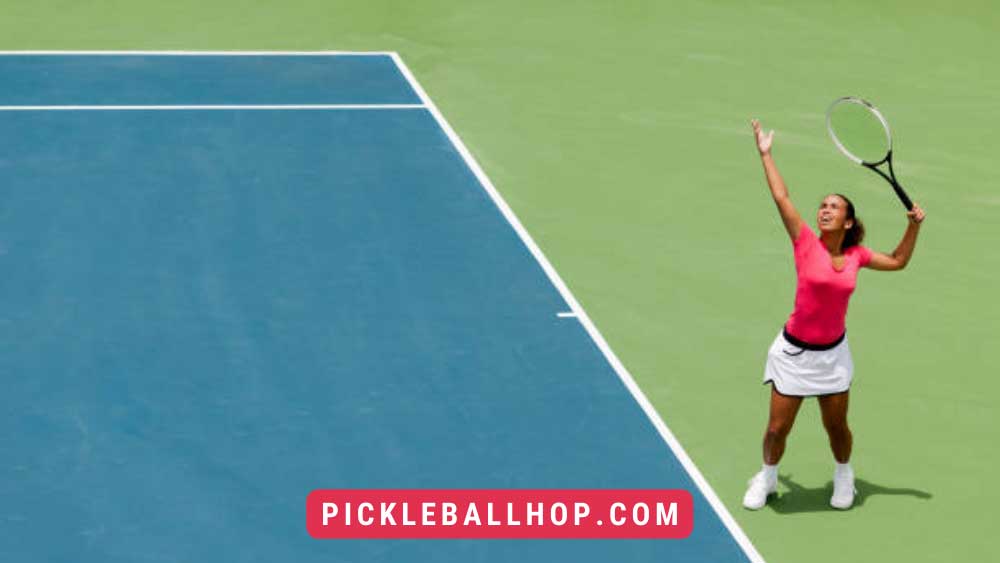
Can you tell when it’s safe to start playing again after taking time off from playing to allow your injury to heal properly?
Firstly, it depends on whether your injury was severe enough to require you to stop…
Even though your injury wasn’t that severe, you stopped for a while because it seemed like the best decision.
In Case Of A More Severe Injury
The following age range may be more appropriate if you have had or still have a severe injury:
- At least one month of symptom-free living
- Your rehabilitation has resulted in significant strength gains.
After suffering from a severe injury, your confidence is probably low, and you don’t want to risk re-injuring yourself.
If that is the case, wait until you feel well (strength returned or symptoms gone) and then ease back into exercise.
When You Stop Being Cautious
Whenever you feel confident enough, you can test the water if you decide to stop despite your injury being not severe and the stakes not being as high.
The focus should be on modulating their playing rather than stopping for months or weeks on end when injured (with mild-to-moderate injuries)…
I don’t think it’s as critical as it might seem from other perspectives when it comes to when to start playing again, as long as you have:
- Invest in soft tissue therapy and do your homework,
- Start slowly, modulate your playing, and warm up thoroughly.
- If it hurts, stop playing.
It can be motivating to continue playing at a reduced frequency and duration.
If you are following the Tennis Elbow self-help program and doing soft tissue therapy, stretching, and exercises, please be sure to do:
Keeping fit and condition is as important as working on your technique.
You may enjoy reading Pickleball Shoes Vs Tennis Shoes
Even if you need to take a time off, you should – But if it isn’t strictly necessary, what motivation would you have if you weren’t playing?
You may want to consider allowing yourself to keep playing if you are able. Being careful will probably prevent a major setback if you encounter one.
Your therapy and rehab exercises will become more challenging as a result!
Final Thoughts
There is no need to panic about tennis elbow, even though it can be pretty debilitating. It won’t take long for you to be back on the tennis court if you’re responsible and take your treatment and recovery seriously. The best option might be to correct your tennis technique in order to avoid future occurrences of tennis elbow, and combine the treatments mentioned above to fully heal your injury!
You may enjoy reading Pickleball Net vs Tennis Net

